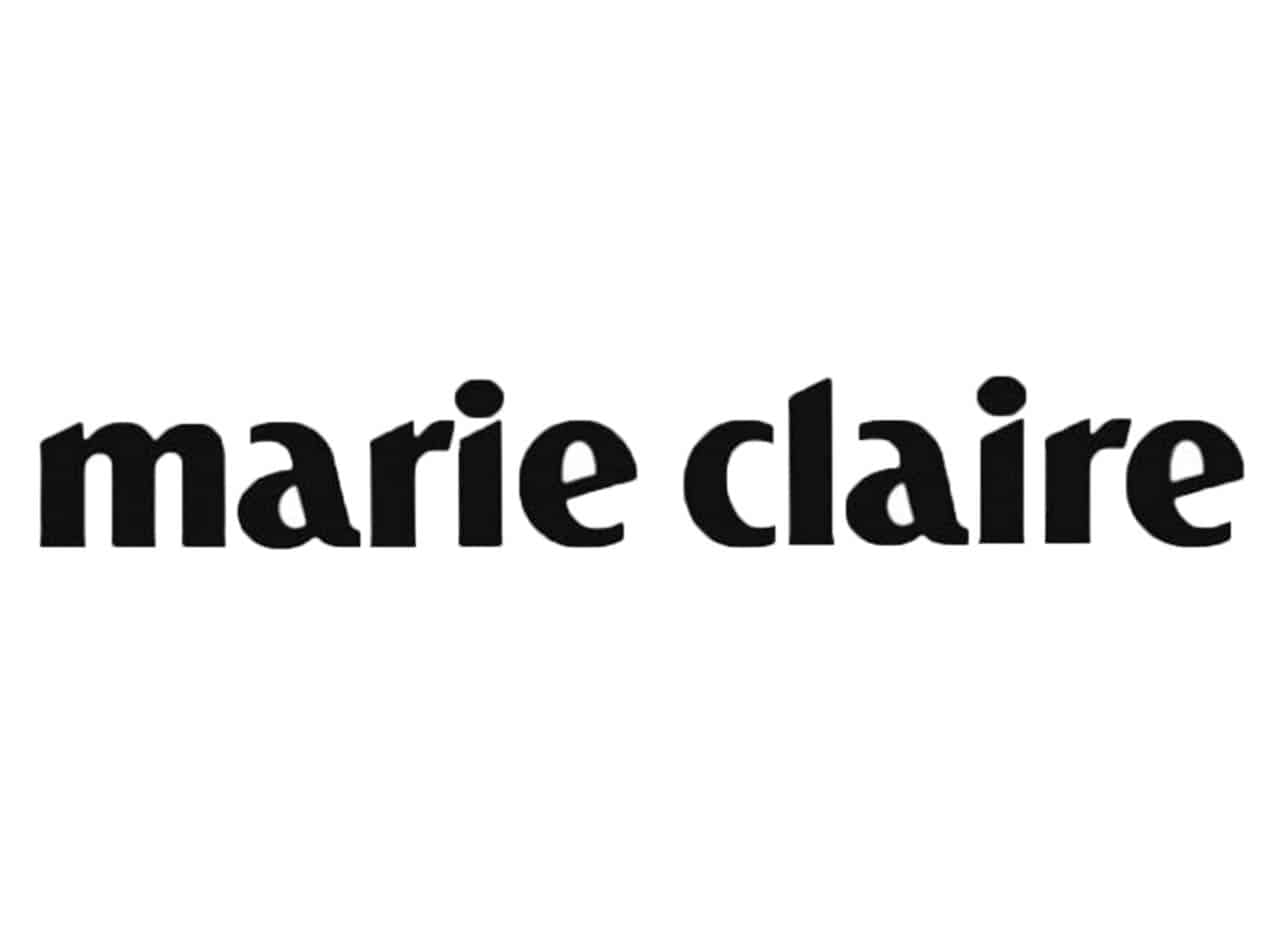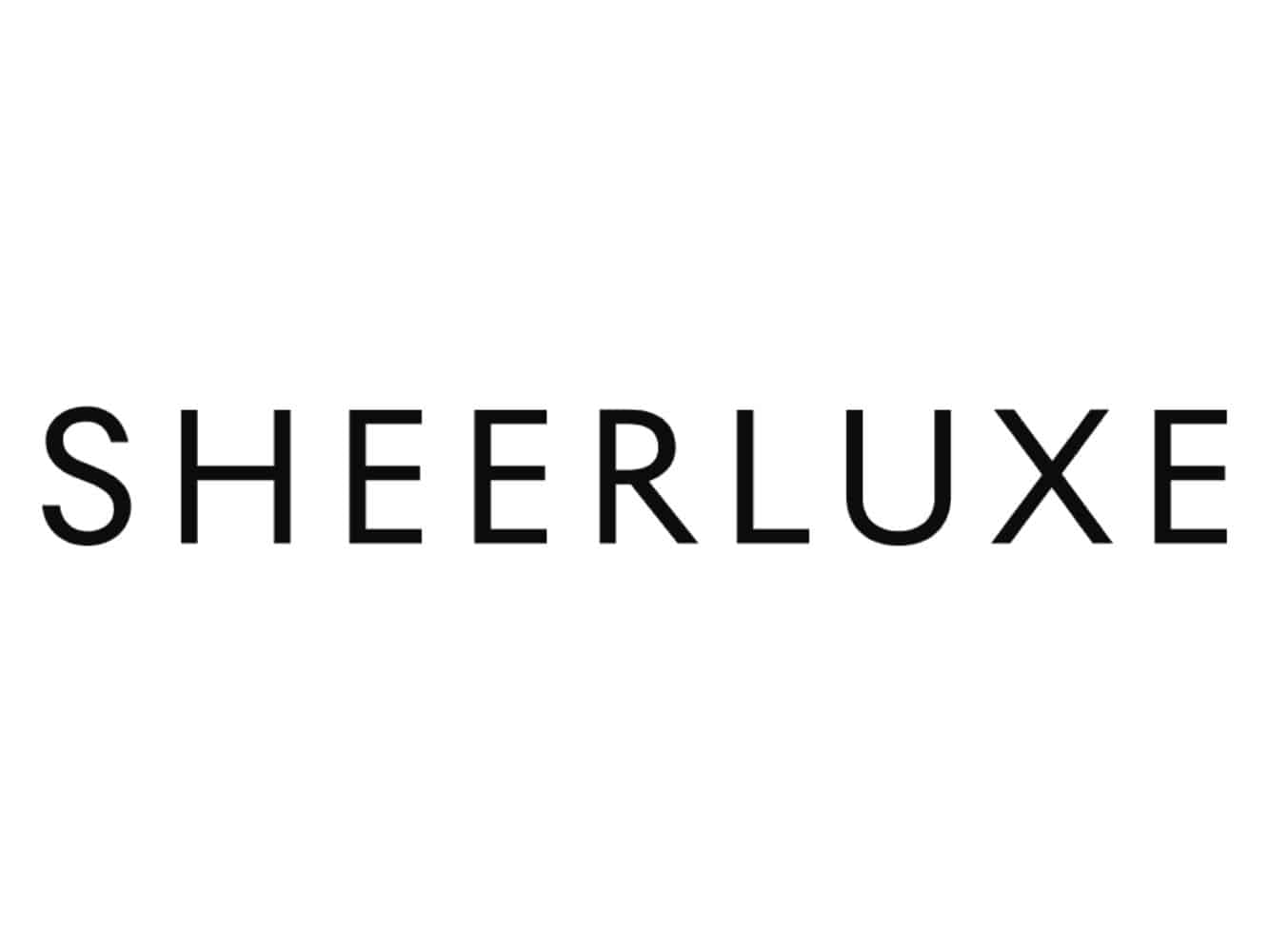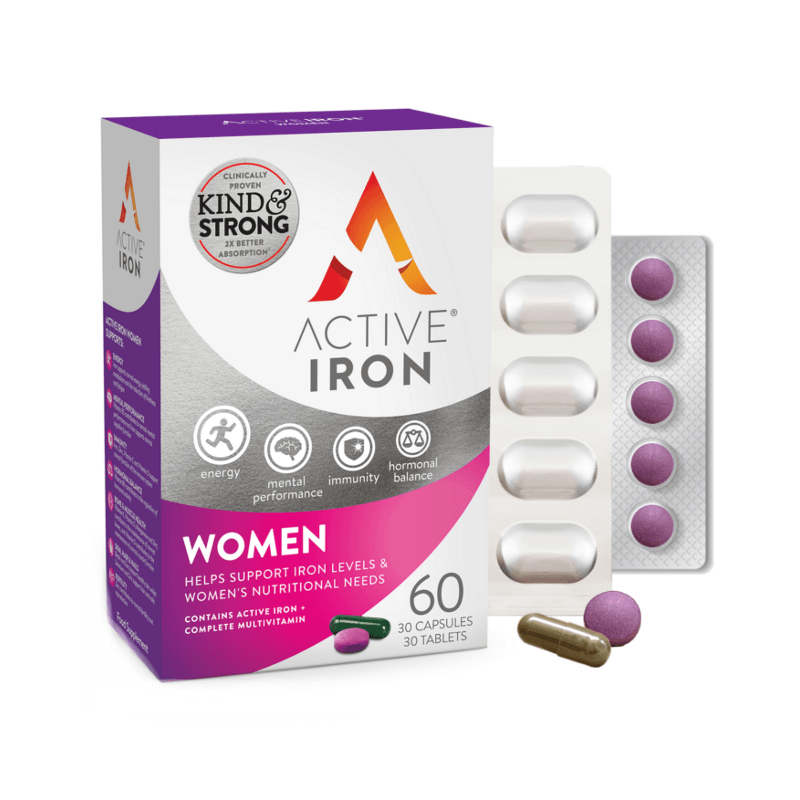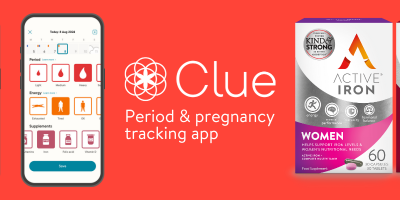
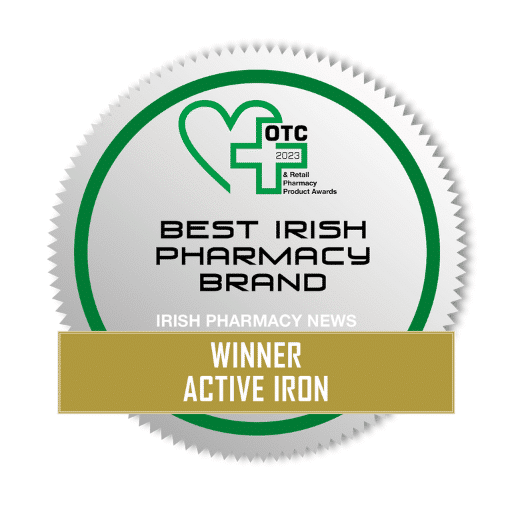
Active Iron is Different.
Say goodbye to the unwanted side effects of iron supplements!
Most iron supplements break down in the stomach, triggering oxidation and gut inflammation – leading to constipation, nausea and all the discomforts you’d rather avoid. But Active Iron is changing the game.
Powered by a whey protein formula, Active Iron delivers iron directly to the DMT-1 site – the sweet spot for absorption. This smart targeting reduces harmful oxidation and shields your gut, making it tough on lower iron but gentle on your stomach.
The results? Up to 94% increase in iron levels² and high absorption¹ compared to other iron supplements. No more trade-offs – just powerful, proven iron support that works with your body rather than against it.
As seen in.
Our products.
Iron supplements loved by real people.
“I live a busy life and like most people I am juggling lots, so having something that supports me on a daily basis is so important to function to the level I want to. Active Iron has had a profound effect on me during my menstrual cycle as it helps support my iron and energy levels throughout the month. I need to maintain high levels of intense training and it’s critical I don’t have a monthly dip in performance due to my iron and energy levels.”
“For years I really struggled with my iron levels. I tried so many iron supplements but couldn’t stomach any of them. Active Iron has been a complete game changer for me. Its Kind & Strong formula doesn’t irritate my stomach and keeps my iron levels topped up so I have all the energy I need to get through my hectic training schedule.”
“I am an active exerciser and follow a largely plant-based diet so have previously suffered with low iron levels, feeling tired and fatigued constantly. I tried so many other brands of iron supplements but all had different side effects. As soon as I started taking Active Iron I knew it was a game changer. Just one capsule a day and zero side effects. Most importantly I feel more like myself and have the energy to do the things that I love.”
Our blog.
Solvotrin Therapeutics Announces Exclusive Agreement with Ortho Molecular Products
Pictured left to right: Jennie Lynch (Enterprise Ireland), Ronan McClafferty (Solvotrin Therapeutics), Pat O’Flynn (Solvotrin Therapeutics), Minister for Health, Jennifer Carroll MacNeill, Gary Powers (Ortho Molecular Products), Nate Freeman (Ortho Molecular Products)...
Solvotrin Announces Long-Term Licensing Agreement with Norwell Consumer Healthcare
October 17th, 2024 – Solvotrin Therapeutics, a leading Irish healthcare development company, is delighted to announce the signing of a long-term licensing agreement with Norwell Consumer Healthcare for the Active Iron brand in Canada. Norwell Consumer Healthcare, an...
Active Iron Partners with Clue to Help Women Combat Menstrual Fatigue and Manage Reproductive Health
At Active Iron, we’re always striving to empower women to take control of their health and well-being. That’s why we’re excited to announce a new partnership with Clue, the globally recognised menstrual and reproductive health app. Together, we’re offering women the...
FAQs.
Who needs iron supplements?
Certain segments of the population are more prone to low iron levels, and turn to iron supplements to keep their iron levels up.
Women of childbearing age typically require up 2X more iron than men of the same age, as blood loss during menstruation depletes the body of iron. Women who experience heavy periods are especially at risk of developing low iron levels, and many find that a daily iron supplement helps restore their iron and energy levels.
During pregnancy, a woman’s iron needs increase 2-3 fold, needing as much as 30-60 mg a day, according to the World Health Organisation. After birth, it can take up to a couple months for iron levels to reach pre-pregnancy levels. Active Iron is suitable for conception, pregnancy, and breastfeeding.
Those on a plant-based diet, such as vegetarians, are another group who regularly turn to iron supplements. While we get iron from food, the iron found in plant-based sources contain non-haem iron, which is harder for our body to absorb than haem iron, the type found in meat. Thus, while a vegetarian’s diet may be high in iron-rich foods, they may still have inadequate iron levels, in which case supplementation is recommended.
Heavy exercisers, especially those who practice endurance sports such as cycling, rowing, or marathon running, often find themselves experiencing depleted iron stores. Our body requires iron to build muscles and keep us energised, so those regularly exercising may benefit from daily iron supplementation.
Which iron supplement is best?
When choosing an iron supplement, it is important to consider two factors: how much iron is available for absorption, and how likely the supplement is to cause unpleasant side effects.
Most iron supplements dissolve in the stomach. This can lead to oxidation and gut inflammation, which can lead to common side effects associated with iron supplements, such as constipation and nausea. Active Iron is different. Its ground breaking whey protein formula targets the right place for absorption, the DMT-1. This helps reduce oxidation, thus protecting the gut from inflammation. As a result, Active Iron is highly absorbed compared to other iron supplements¹, making it gentle on the stomach and clinical results have shown that it increases iron levels by 94%².
¹Wang et al. 2017, Acta Haematologica, 138: 223-232. ²Ledwidge et al. 2021. Data on file.
How many mg of iron do we need per day?
Women of childbearing age need 14mg of iron per day. Pregnant women require up to 30mg per day. Men and menopausal women require 9mg per day. Higher doses of iron are often needed for for people with heavy periods, partake in endurance sports and have impaired iron absorption.
A blood test will determine haemoglobin and ferritin (storage iron) levels. Clinical studies have shown that people can increase their iron levels by 94% in 6 weeks with Active Iron*.
*Ledwidge et al. Data on file.
Why should you choose Active Iron’s iron supplements?
Every day, Healthcare professionals are recommending Active Iron to their patients.
Most iron supplements and tablets dissolve and oxidise in the stomach; this can cause unpleasant and sometimes severe gastrointestinal side effects (such as stomach upset and constipation). Active Iron is different, its unique formula provides 2X better absorption*. As a result, more iron is available for the body to absorb, helping to avoid the common side effects of iron**.
Clinical studies have demonstrated that Active Iron increases iron and energy levels whilst helping to prevent gut irritation.
*Wang et al. 2017, Acta Haematological, 138: 223-232
**Ledwidge et al. Data on file.
What are the side effects of iron supplementation?
Iron is poorly absorbed by the body and many formulations in the market claim to reduce or avoid the common side effects. Some examples include:
1. Reducing the dose significantly which can reduce the side effects. However, this can often mean to dont get sufficient iron.
2. Adding Vitamin C as an antioxidant to try and counteract some of the oxidative stress associated with iron.
3. Use a different form of iron and or a ferric iron.
Active Iron is different, its unique formula provides 2X better absorption*. As a result, more iron is available for the body to absorb, helping to avoid the common side effects**.
*Wang et al. 2017, Acta Haematological, 138: 223-232
**Ledwidge et al. Data on file
Can you take iron supplements without seeing a doctor?
Is there any risk of iron overdose with Active Iron?
Active Iron is a low dose product (from 14mg to 25mg) that is 2X better absorbed compared to other iron supplements. We recommend Active Iron only to those who are at risk of developing low iron levels (i.e those with regular periods, pregnant, vegetarians, heavy exercisers) or have low iron levels.
14mg of iron is the recommended daily allowance for iron set by the regulator (EFSA). 14mg would be considered safe based on daily intake for the average person. A tolerable upper limit of 45mg has been recommended for iron and this is based on tolerability of iron products.
How does Active Iron differ to prescribed iron or liquid iron?
Most liquid iron supplements contain a much lower dose of iron which is why they can avoid these common side effects. Although this is a great benefit, they often do not provide sufficient iron to increase iron levels with some only containing 5mg iron per serving.
Active Iron is different. Unlike other oral iron it’s whey protein formula protects the iron from oxidation allowing for 2X better absorption. As a result Active Iron is clinically proven to increase iron levels by 94% and is gentle on the stomach, helping to prevent gastrointestinal side effects and allowing for 4X better compliance in taking the product.
How does Active Iron help alleviate menstrual fatigue?
Has Active Iron Pregnancy Plus been discontinued ?
Active Iron Pregnancy Plus has changed to a new and improved Active Iron Pregnancy.
The key changes are as follows:
- New Technologically Advanced time-release Multivitamin
- Removal of Omega component
NEW Active Iron Pregnancy contains 20 active ingredients in two specialised components:
- Active Iron capsule with 25mg of elemental iron. Clinically proven to increase iron and energy levels in a non-constipating formula.
- Special time-release multivitamin formulated to work in sync with Active Iron to optimise absorption, controlling when each layer is released and absorbed. Contains folic acid as highly absorbable L-methylfolate, vitamin D, calcium, magnesium, iodine, high dose B vitamins and many more key nutrients for pregnancy.


